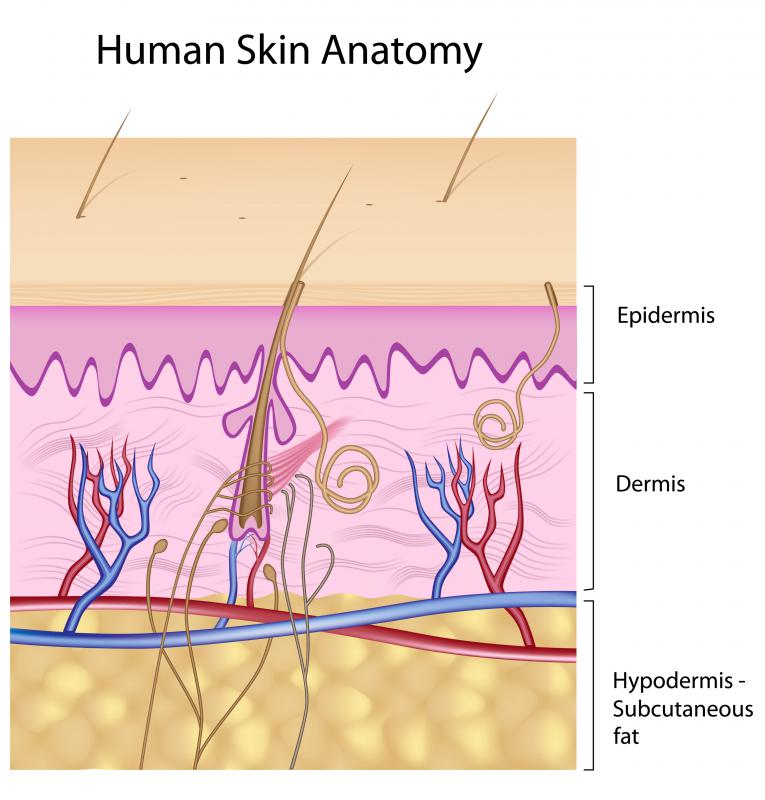At WiseGEEK, we're committed to delivering accurate, trustworthy information. Our expert-authored content is rigorously fact-checked and sourced from credible authorities. Discover how we uphold the highest standards in providing you with reliable knowledge.
What Are the Different Organs in the Integumentary System?
The integumentary system includes the skin and all of the organs that originate from it, including the glands, hair, and nails. Skin is made up of several layers — the epidermis, dermis, and subcutaneous. Each layer, with the exception of the subcutaneous, encompasses other strata within it, such as the stratum corneum of the epidermis. Chief functions of organs in the integumentary system include oil and sweat production, thermoregulation mechanisms, and protection from harmful microorganisms.
Development of organs in the integumentary system starts in the fourth prenatal week arising out of the embryonic ectoderm, which later differentiates into the epidermis and dermis. By the end of the third month, the blood vessels of the dermis are formed as well as fibrous connective tissue from the mesoderm. Out of hardened ectoderm, the fingernails and toenails develop and hair begins to come in during the fifth prenatal month.

Commonly referred to as oil glands, sebaceous glands secrete a fluid called sebum, a mixture of wax and lipids mostly found on the face and scalp. These glands secrete into ducts within hair follicles, organs in the integumentary system that include the hair beneath the scalp's surface. Oil is essential for keeping hair elastic and prevents drying of the skin. When children reach adolescence, sebum secretions increase due to production of hormones often resulting in acne.

An important function of the skin is control of body temperature via perspiration, which is made possible through organs in the integumentary system called sweat glands. Through the production of sweat, the body is able to lower temperature by evaporating on the skin's surface. Capillaries in the skin also dilate and constrict, further affecting temperature as well.

Acting as a protective waterproof barrier for underlying organs, the epidermis is the outermost layer of the skin and encompasses several layers. The most superficial of these layers is referred to as the stratum corneum and the stratum basale is the innermost layer. The epidermis is responsible for production of keratin and melanin, a pigment necessary for skin coloring.
Laying underneath the epidermis, the dermis is the dense fibrous layer of skin consisting primarily of collagen, important for lending skin its properties of elasticity, strength, and flexibility. Blood vessels are also located here as well as sensory nerves necessary for the sensations of temperature and pain. Sensations of pressure are also produced by nerve cell receptors in this layer. The hair follicles penetrate the dermis also.
Consisting of adipose tissue, the subcutaneous layer of skin lies directly beneath the dermis and is typically referred to as the fatty layer of the skin. Primarily, this layer of the skin provides insulation and protection from drastic temperature fluctuations in the climate. Thickness of the subcutaneous differs from person to person, but generally it is thinnest in the very young and aged.
AS FEATURED ON:
AS FEATURED ON:













Discuss this Article
Post your comments